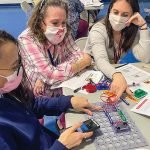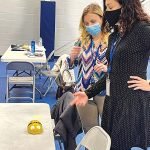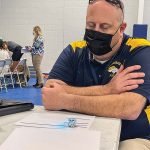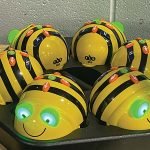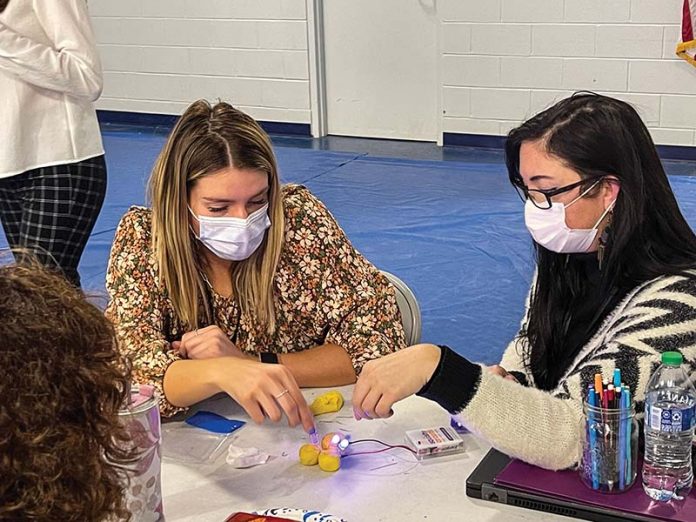
By Stefanie Jackson – After the Cal Ripken Sr. Foundation’s assistance with fundraising, coordinating, and teacher training, more than half of the Eastern Shore’s elementary and middle schools have centers for science, technology, engineering and math, aka STEM, open and ready to serve students.
The Cal Ripken Sr. Foundation seeks to help “build character and teach critical life lessons to at-risk young people living in America’s most distressed communities,” according to a presentation made by Tim Bancells, assistant director of STEM for the foundation, during two teacher training sessions held this week in Accomack and Northampton schools.
But how did a foundation named after a baseball player, coach, and manager – and the father of major league baseball player Cal Ripken Jr. – become involved in an initiative unrelated to athletics?
The Cal Ripken Sr. Foundation started out in 2001 developing youth programs and parks that gave kids safe places to play, but “not every kid is interested in sports,” Bancells said.
The foundation formally started its STEM program in 2016, has opened 156 STEM centers across the U.S., and expects to have finished 250 STEM centers by the end of the year.
STEM centers are now available for use by teachers and students in Accomack County at Accawmacke, Chincoteague, Kegotank, and Pungoteague elementary schools and Chincoteague Middle School. Northampton County has STEM centers available at Kiptopkeke and Occohannock elementary schools.
Fundraising continues for completing STEM centers at Metompkin Elementary School and Arcadia, Nandua, and Northampton middle schools and Tangier Combined School.
A reception was held Tuesday night in Captains Cove to celebrate the opening of the Shore’s first seven STEM centers and discuss next steps for fundraising and completing the remaining five STEM centers.
Tuesday’s teacher training session was led by Kyle Chung, of Engage Learning, in partnership with the Cal Ripken Sr. Foundation, at Kegotank Elementary School in Accomack.
Over the course of a four-hour period, teachers learned the basics of operating the STEM kits and coming up with creative ways to incorporate the technology into lessons on any school subject, not just science or math.
For example, the first STEM kit examined was the Bee Bot, a small robot resembling a bumblebee, which can be programmed by pressing buttons on the device in sequence. The Bee Bot can move forward, backward, or rotate left or right.
The Bee Bot comes with two mats, one with a plain grid pattern and the other depicting a neighborhood with streets for the Bee Bot to navigate.
The grid is versatile because the empty spaces could be covered with different numbers or letters and a teacher could challenge students to program the Bee Bot to travel the grid to the correct answer to a math problem or reading exercise, Chung explained.
The Bee Bot also could be used during a geography lesson on landforms or the directions on a compass, he suggested.
Chung introduced the teachers to the Foundational Fluencies and STEM Pathways 3D building blocks and showed them a simple bridge he had built and asked each team to replicate it.
He showed how easily the bridge collapsed after applying some pressure to it and instructed the teams to reinforce their bridges with any of the pieces found in their kits; the only rule was that pieces could not be removed, only added.
This was a demonstration in teaching basic engineering concepts. Chung noted additional challenges could include limiting the number of blocks used, or the teacher could assign dollar values to each piece as part of a lesson on building within a budget.
The teachers familiarized themselves with Snap Circuits, used by snapping prefabricated plastic circuitry components onto a “circuit board,” also of plastic. The teachers learned terms such as open, closed, and short circuits.
Chung noted that the Snap Circuits are safe to use and if a teacher or student accidentally creates a short circuit, the kit’s batteries (the STEM kits use standard-sized batteries) could be damaged but no one could be physically harmed.
The Squishy Circuits kit involved two types of play dough – one is an insulator and the other is a conductor of electricity. The teachers completed a project in which they powered small LED light bulbs connected to the conductive play dough.
The littleBits kit also teaches circuitry, but with magnetic pieces somewhat similar to building blocks that are connected in rows or strips. The teachers used the littleBits to build a self-driving, two-wheeled vehicle and a device that triggered an alarm when a cellphone was lifted from it.
Chung called the Makey Makey kit the culmination of everything taught by the other circuitry kits and said it has the steepest “learning curve.”
The Makey Makey kit contains a device that resembles a basic video game controller and is used to connect everyday objects to a computer. The teachers completed a project in which they connected bananas and mandarin oranges to laptops and used the fruits as piano keys to play notes on a piano computer app.
The final product the teachers tried was the Ozobot, a tiny robot that follows commands given to it by drawing wide lines on white paper with special chisel-tipped markers in black, blue, red, and green ink.
The markers are used to draw a path that is a black line interspersed at points with short sequences of colors that are codes giving the Ozobot commands such as slow down, speed up, or spin in a circle.
On display during the training session were other supplies and equipment included in each STEM lab: a 3D printer and a tech tub, which resembles a mini fridge but is used to store and charge the six laptops included in the STEM package.
(Chung noted a separate training session can be scheduled for use of the 3D printers.)
Each STEM center also includes a workbench in which most of the kits can be stored, as well as tables, chairs, power strips, and spare batteries.
The Tuesday training session was attended by about 30 Accomack teachers and administrators; the teachers will return to their respective schools and train their peers to use the STEM kits, and then they can start using the labs with their students, said Early Childhood Education Coordinator Belinda Rippon.
For now, teachers will sign up to use the STEM centers at selected times, but Rippon’s department is considering adding STEM class time to the next school year’s weekly rotation of specials such as art, music, and gym.
Click on a photo to view it in full size.

